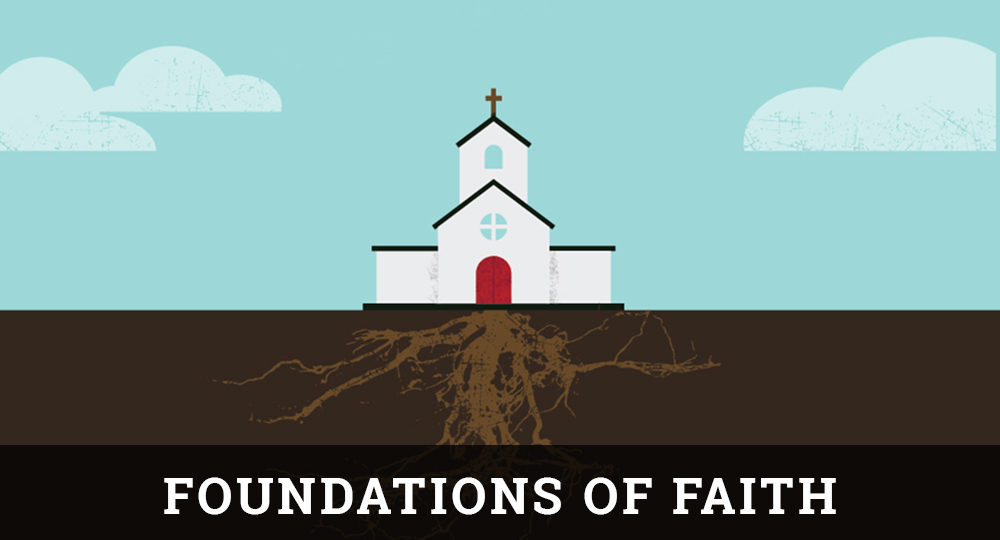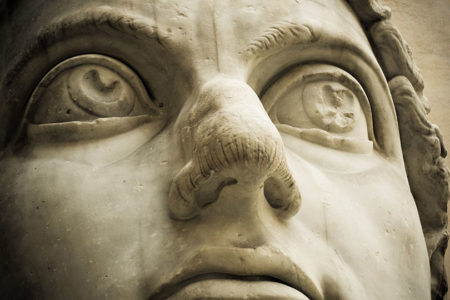Jesus Christ and the Future Kingdom of God Part Two
In the previous article in this series, we learned several things. As a result of the first Adam’s joining Satan’s revolt against God, the theocratic kingdom of God was lost from the earth, Satan usurped the rule of the world system away from God, and he has continued to dominate the world system ever since. To fulfill His purpose for history, God must crush Satan by ridding the earth of him and his world system rule and then restore His theocratic kingdom rule to this earth before its history ends. In the future, Jesus Christ, as the last Adam, will crush Satan and restore the theocracy.
This article focuses on a critical item related to this future work of Christ—the sealed scroll of Revelation 5.
The Identification of the Sealed Scroll
The Setting of the Sealed Scroll
In Revelation 4 and 5, where John was introduced to things that “must” take place in the future (4:1), the apostle saw Christ take a scroll from the hand of God the Father. The scroll was sealed with seven seals. Christ took the scroll so that He could break its seals, open it, and read what was written inside (5:1–7). The identification of the sealed scroll is critical to an understanding of the future events revealed in Revelation 6–20. To discern that identification, we must observe several things emphasized in Revelation 4 and 5.
First, Revelation 4:11 emphasizes that God created “all things” that have been created, and that He created these things for His own benefit or purpose.
Second, God’s power or authority to rule all of creation is emphasized in two ways in chapters 4 and 5. God’s throne is mentioned 17 times. The word for throne indicates dominion or sovereignty (William F. Arndt and F. Wilbur Gingrich, A Greek-English Lexicon of the New Testament, p. 365).
Also, the doxologies in 4:11 and 5:13 use two words to ascribe great power to God. One of those words, kratos (5:13), sometimes “is designed to stress the power of God which none can withstand and which is sovereign over all.…It denotes the superior power of God to which the final victory will belong” (Wilhelm Michaelis, “kratos,” Theological Dictionary of the New Testament, vol. III, p. 907–908).
The other word, dunamis (4:11), was used in statements that express “the hope and longing that God will demonstrate His power in a last great conflict, destroying His opponents and saving those who belong to Him. Thus, the righteous wait for God to reveal Himself in power and definitively to establish His dominion” (Walter Grundmann, “dunamis,” Theological Dictionary of the New Testament, vol. II, p. 295).
These words portray a divine power that is active in history, a power that shapes and sets a goal for history in accordance with God’s own sovereign will and purpose (Ibid., pp. 292, 306).
Third, Revelation 5:9, 12 portrays Christ as the Redeemer. It emphasizes His work of redemption through His death and shed blood and that He alone is worthy to take the scroll from God’s hand, break its seals, open it, and read it because of His work of redemption.
Fourth, Revelation 5:12–13 points out Christ’s worthiness as the Redeemer to exercise God’s ruling power. There the same power words for God’s rule noted earlier are ascribed to Him. In fact, in 5:13 one of those words is used jointly for God and Christ.
The Background of the Sealed Scroll
The Scriptures teach that because God created the earth and everything in it, He is its owner and sovereign King (Ex. 19:5; 1 Chr. 29:11; Ps. 24:1–2; 47:2–3, 7–9).
When God established His theocracy, He gave His earth to mankind as an inheritance forever (Gen. 1:26–28; Ps. 115:16; Isa. 24:5 [“the everlasting covenant”]). Mankind, however, was not to be regarded as sole owner and authority of the earth. Because God was the ultimate owner, mankind was responsible to serve as His representative, administering His rule over the earth for His benefit in accord with His sovereign purpose and in obedience to His commands (Gen. 2:15–17). God was the landlord; mankind was the tenant possessor.
Because God was the ultimate owner and mankind was only His tenant possessor, mankind did not have the right or authority to forfeit tenant possession or administration of God’s earth to anyone else (to a non-kinsman). Tragically, mankind did forfeit tenant possession of their earth inheritance to Satan (a non-kinsman of mankind) by following his lead to rebel against God (Gen. 3). Satan thereby usurped tenant possession of the earth from its original mankind and, therefore, from God. He has exercised administrative control of the world system against God ever since.
Mankind’s loss of tenant possession inheritance of the earth to Satan is temporary because God has established a program of redemption to prevent this loss from being permanent. This program is based upon the work of a kinsman-redeemer. That Kinsman-Redeemer is the incarnate Jesus Christ.
As the Kinsman-Redeemer, Christ had to pay a redemption price to redeem mankind and their forfeited inheritance. The redemption price He paid was His blood (Eph. 1:7; Col. 1:14; 1 Pet. 1:18–19; Rev. 5:9).
Although Christ paid the redemption price, He will not return the administration of the whole earth to Adam, the man who forfeited mankind’s inheritance. As the Kinsman-Redeemer and last Adam, Christ will keep the earth to administer it for God’s purposes (Rev. 11:15). Christ “shall be king over all the earth; in that day shall there be one Lord” (Zech. 14:9).
Conclusion Concerning Identification
In light of the things emphasized in Revelation 4 and 5 and the background of the sealed scroll, it can be concluded that the sealed scroll of Revelation 5 is to be identified as the deed of purchase for mankind’s tenant possession inheritance of the earth, which was forfeited when mankind fell away from God. Just as scroll deeds of purchase were made when Jeremiah paid the redemption price to redeem his cousin’s tenant possession of land (Jer. 32:6–12), so a scroll deed of purchase was made when Christ paid the redemption price to redeem mankind’s tenant possession of the earth by shedding His blood. Alfred Jenour wrote, “We regard it as a COVENANT DEED, the book in which were registered the terms of man’s redemption, and his restoration to the dominion of the earth and all those privileges which he had forfeited by transgression” (Rational Apocalypticum, vol. I, p. 202).
Jeremiah’s scrolls were legal evidence of his payment of the redemption price and, therefore, of his right of tenant possession of the land. The word translated “deed” (evidence) in Jeremiah 32:12 was used for important legal documents that were usually in scroll form (Richard D. Patterson, “seper,” Theological Wordbook of the Old Testament, vol. II, p. 633). In the same manner, Christ’s scroll deed is legal evidence of His payment of the redemption price and, therefore, of His right of tenant possession of the earth.
The Need for the Sealed Scroll Deed
One of Jeremiah’s scroll deeds was sealed to prevent anyone from changing its contents. That gave the scroll the nature of irrefutable evidence. Gottfried Fitzer wrote, “The seal served as a legal protection and guarantee in many ways, esp. in relation to property” (“sphragis,” Theological Dictionary of the New Testament, vol. VII, p. 940). Parallel to this, the scroll deed of Revelation 5 is sealed with seven seals, giving that deed the nature of irrefutable legal evidence that Christ is the Kinsman-Redeemer who has the right to take tenant possession of the earth.
Jeremiah’s scroll deeds were placed in a secure place where they could be preserved for a long period of time because he did not take actual possession of the land immediately after paying the redemption price. Circumstances removed him far from the land for many years. In like manner, Christ’s scroll deed was placed in a secure place (God’s right hand in heaven, Rev. 5:1, 7) for a long period of time because He did not take actual possession of the earth immediately after paying the redemption price at the cross. He removed to a location far from the earth (heaven, Acts 1:9–11) for many years.
Just as squatters controlled the land of Israel (including the land Jeremiah had purchased) for many years while the Jews and Jeremiah were removed from it, so squatters (Satan and the human members of his kingdom) are controlling the world system during the years Christ is removed from the earth.
The Two Responsibilities of the Kinsman-Redeemer
Land redemption in Israel involved two responsibilities for a kinsman-redeemer. First, he had to pay the redemption price for the forfeited land and thereby obtain the right of tenant possession. Second, he had to take actual possession of the land and exercise administrative rule over it. Sometimes this required him to evict squatters who had begun to exercise tenant possession of the land illegally.
In like manner, the redemption of the earth involves the same two responsibilities for Christ, mankind’s Kinsman-Redeemer. First, He had to pay the redemption price for the earth and thereby obtain the right of tenant possession. Second, now that Christ has obtained that right, He must take actual possession of the earth and exercise authoritative rule over it. This will require Him to evict the squatters—Satan and his forces—who have exercised illegal tenant possession of the earth since mankind’s fall.
The Significance of Christ’s Action With the Sealed Scroll
If illegal tenants challenged an Israelite kinsman-redeemer’s right to take tenant possession of land, the redeemer had to produce legal evidence that he had paid the redemption price and, therefore, had the right to take possession. The sealed scroll deed of purchase was that legal evidence.
Christ will return to the earth to take tenant possession at His Second Coming after the end of the 70th Week of Daniel 9. By the end of the 70th Week, Satan and his forces will have drawn the rulers and armies of the world into the land of Israel to fight against Christ (Ps. 2:1–3; Rev. 16:12–16; 19:11–21). This will be Satan’s ultimate challenge to Christ’s right to take tenant possession of the earth and to rule it.
This challenge will require Christ to provide irrefutable legal evidence of His right of tenant possession before He evicts the illegal tenants and takes actual possession. His sealed scroll deed will be that evidence. At the beginning of the seven-year 70th Week, Christ will take that deed from God’s hand and begin to break its seven seals one by one. He thereby will instigate three series of judgments that will devastate significant areas of Satan’s earthly domain (Rev. 6–18) and will demonstrate that He has the power necessary to evict Satan and his forces. As a result of having broken all seven seals during the 70th week, Christ will have the scroll deed open by the time of His Second Coming. At that time He will read the contents of the scroll publicly as the conclusive legal evidence that He is the true Kinsman-Redeemer of mankind’s forfeited inheritance and, therefore, has the right to evict Satan and his forces and take tenant possession of the earth (Ps. 2:7–9). After presenting this evidence, Christ will fully exercise that right by ridding the earth of Satan and his forces and taking the rule of the earth as the last Adam (Rev. 19:19–20:6).







